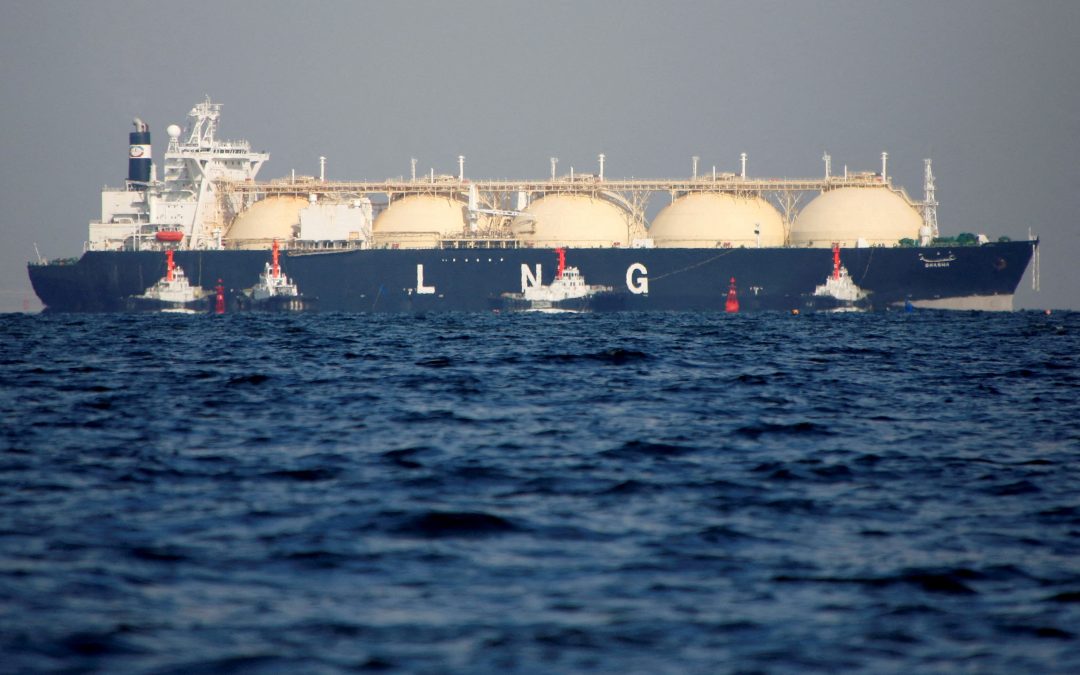The recent drop in the Platts West India marker to a near two-year low, expectations of a ramp-up in operations at Dhamra LNG terminal and the hot weather will likely keep spot LNG procurement supported in India, despite a rise in domestic natural gas production, industry sources told S&P Global Commodity Insights.
“LNG procurement should mostly not be that much affected by domestic gas production because demand has also grown,” a domestic Indian-gas source said.
According to S&P Global seaborne data, India’s LNG imports rose to 2.02 million mt in April from 1.94 million mt in March and from 1.70 million mt in April 2022.
The International Energy Agency, or IEA, in May revised upwards India’s natural gas consumption for 2023, with the agency predicting a 4% year-on-year increase due to a modest recovery in the power sector and continued growth in industrial activity and city gas sectors.
“Out to 2030, we expect gas demand to grow by 3.4% on an annual basis. This will be primarily led by gas demand growth in the city gas sectors, industries and feedstock for fertilizer plants,” Zhi Xin Chong, Director, Gas, Power, and Climate Solutions at S&P Global said.
With the CGD rounds now covering 98% of India’s population, many companies are now investing in developing new infrastructure to reach out to this customer base.
“We expect gas demand in this sector to continue its rapid growth especially with the expansion of pipelines in the East Coast of India,” Chong said.
Gas production increases
Gas supply continues to grow as Reliance Industries Limited-BP start up production from the MJ gas fields, developed in the KG-D6 block.
In an operational update in April, RIL said that production from KGD6 rose 13.8% year on year to 42.9 Bcfe in January-March.
With incremental gas production from MJ field, along with ongoing production from R Cluster and Satellite Cluster fields, output at KG-D6 is expected to reach about 30 MMSCMD in FY24, it added.
ONGC, which contributes two-thirds of the country’s oil and gas output, has stepped up discussions with ExxonMobil, Equinor, the American oil services conglomerate Baker Hughes, and French research organization Instituted Français du Pétrole on various issues such as technology and deepwater collaboration.
“Energy security is geography dependent…ONGC invests $ 3.5 billion to keep up production,” ONGC Chairman and CEO Arun Kumar Singh said in February.
Meanwhile, sources noted that softer WIM LNG prices were also likely to spur demand in India even as other Asian countries reel from excess stock amid muted demand.
Platts assessed WIM for June slipped below $10/MMBtu this month. The marker reached a near two-year low on May 5, when it was assessed at $9.638/MMBtu and was last assessed at $9.775/MMBtu May 11.
“India can buy cargoes as the price is now below the Brent-linked prices. We have an old contract with Brent slope that is higher…so the price range currently makes sense for us,” an industry source said, adding that $10.5/MMBtu could be a key level for most of the Indian importers, given the current crude oil prices.
The forward curve for JKM suggests that weakness in LNG prices will continue to sustain, with the August derivative price assessed at $11.25/MMBtu and September derivative at $12.35/MMBtu on May 11 at Singapore close.
Surge in tender activity
Bharat Petroleum Corporation Limited, or BPCL, has recently awarded its LNG tender for delivery on June 14 to Dahej. Most of the volume is expected to be used in its refinery, industry sources said.
An industry source said that BPCL may bring out a RLNG tender to market some volume from the tender that it awarded. The source added that if such a RLNG tender is successful, more LNG buy tenders may be in the plans.
Meanwhile, the Reliance-BP consortium carried out an e-auction for sale of 6 MMSCMD on April 12. “The entire volume was sold and Gas sale purchase agreement (GSPA) under execution with successful bidders,” RIL said in a statement.
Domestic gas market participants are also eyeing the Reliance-BP auction on May 19 that seeks bids for up to 6 million standard cu m/day for a tenure of three to five years.
In April, Petronet LNG awarded a mid-June cargo tender and Indian Oil Corp. awarded two cargoes for delivery in May-June and end June-early August.
Other factors
The start of operations at Dhamra Terminal is also expected to support demand, sources said.
The Dhamra LNG terminal, located in the state of Odisha on the east coast of India, is owned by Adani Total Private Ltd., a 50:50 joint venture between TotalEnergies and Adani Group and has a 20-year LNG regasification/tolling agreement with Indian Oil Corp, and GAIL. The terminal received its first cargo from Qatargas in April and is expected to start commercial operations by the end of May.
“IOCL is already looking to import additional LNG cargoes for its refineries. The expansion of the Urja Ganga gas pipeline to the northeast will also open a new market that will support LNG imports. However, these developments will take time as the city gas distribution network is slowly expanded,” Chong said.
Meanwhile, the ongoing harsh summer is also making calls to shore up fuel reserves and supply is expected to have the largest impact on coal, and on gas to some extent.
“Maximum temperatures are very likely to rise by 3-5 Degrees Celsius over most parts of the country,” Indian Meteorological Department said May 11.
The IMD May 12 also predicted heatwaves in isolated pockets over Konkan and Madhya Maharashtra today and over Gujarat, west Rajasthan, West Madhya Pradesh, Bihar, Odisha, Gangetic West Bengal, Coastal Andhra Pradesh and Yanam during the next few days.
Source: Hellenic Shipping News






